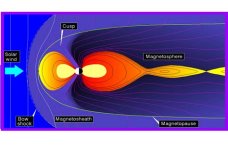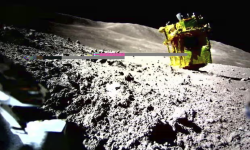You mention the "average distance" of the moon, but you're not considering that the crewed part of the mission could take place while the moon is on the far side of the Earth from the Sun. The heliosphere is much further away on the lee side:
NASA estimates 1000 Earth radii.
Artemis 3 (the first human landing one) takes 2.4 to 4 days each way, plus about a week on the surface. It could simply be done around Full Moon.
Apollo btw, typically landed around lunar dawn. This was because they needed eyes on the craters. Now that the surface of the moon is thoroughly mapped and we have much better computers, it's no longer necessary to do that. Payload on the lander is much more too, so I expect they will have radar for landing.



